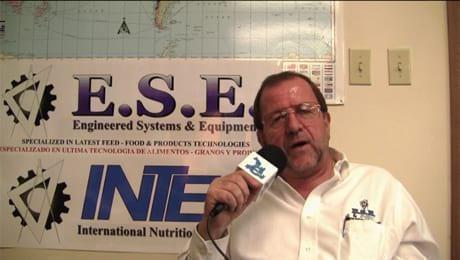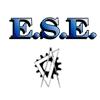Explore all the information on
Feed additives
Welcome to the page about Feed additives of Engormix; a source of knowledge on Feed additives.
Introduction Historically, fiber-containing ingredients when incorporated into a pet food have been associated with grain by-products. Thus “fiber” has been associated with the nutritional term “crude fiber, and has been looked upon as a more negative component in pet foods. In recent years, a better understanding of the nutritional and physiological functions of fiber has made it an important nutrient in the...
Comments : 0
Recommendations: 0
INTRODUCTION
In view of organic livestock farming, Greece has many advantages in comparison to the other European countries, the temperate climate and the wide and rich ecosystems in countryside. For thousands of years, outdoor pig farming has been one of the most important livestock production sectors in Greece. Since the 60s, the introduction of high-yielding pig genotypes,...
Comments : 0
Recommendations: 0
Despite the accelerating knowledge in understanding metabolism and nutrition and the considerable improvement in farm management in aquaculture, financial losses due to diseases still strike producers severely everywhere in the world. Often the reasons for the outbreak of diseases are not obvious but increased mortalities or reduced meat quality are at least in part triggered by stressful husbandry, overstocking, poorly adjusted feed levels or inferior feed, as...
Comments : 0
Recommendations: 0
Every 7.67 seconds the world gains three extra people and loses one hectare of arable land. The irony is the demand for agricultural land is on the rise as the world needs to produce enough food to feed its inhabitants. Chronic undernourishment affects some 800 million people, i.e., 17% of the population of developing countries, and 34% in sub-Saharan Africa. Increased agricultural trade and efficient utilisation of available food resources will be a key to the future food security of...
Comments : 0
Recommendations: 0
INTRODUCTION Animal husbandry suffers from losses due to contamination with pathogenic bacteria. Their resultant impacts in animals include lower weight gains and increased mortality. Banning the use of in-feed antibiotics (AGPs) in livestock, as has happened in the EU, placed more pressure on animal producers and feed millers. In this context, organic acids have long been used to counteract gram-negative pathogenic bacteria in animal feed; and...
Comments : 4
Recommendations: 0
Summary The application of organic acids and their salts to diets for pigs has been studied extensively. They have proved especially effective in maintaining growth performance since the ban on antibiotic growth promoters came into effect in Europe in 2006. Numerous trials have demonstrated their mode and magnitude of action and have established effective doses for piglets,...
Comments : 2
Recommendations: 0
Organic acids and Essential Oils in monogastric diets
Successful feed formulations must both promote the growth of the animal and discourage the growth of pathogenic bacteria in the gastrointestinal tract. Feeding for health as well as nutrition is certainly a major criterion in the design and formulation of piglet and poultry feeds.
Organic acids are used...
Comments : 2
Recommendations: 0
INTRODUCTION Antibiotics are microbial metabolites produced by fungi and algae which have low molecule weight and can inhibit the growth of other microorganisms even in low concentrations (Nir and Ve-Senkoylu, 2000). While antibiotics have prevalently been used as growth promoters in animal nutrition, European Community has prohibited the use of antibiotics in animal nutrition as growth promoters from January 1, 2006 (Anonymous, 2005). As a...
Comments : 2
Recommendations: 0
The Adisseo and Denkavit Ingredients companies are pleased to inform their German customers that they are joining forces for the development of Rovabio® , Adisseo's NSP enzyme range. The Denkavit expert team will provide technical support to the sales team of Adisseo in the German market, where Rovabio® customers will benefit from the...
Comments : 0
Recommendations: 0
Introduction As the world´s population continues to increase, demands for food will experience dramatic growth. This coupled with raising affluence in developing nations, will shape the eating habits of the global population. Protein rich foods particularly meat consumption raises when disposable incomes rises. Consequently, the animal food industry and its allied sectors are set to experience major growth. Analysts have observed that this...
Comments : 2
Recommendations: 0
Weaning as currently practiced represents one of the most critical periods in the raising of pigs. It is characterized by a diminution in feed consumption, leading to a state of severe anorexia, an increased sensitivity to digestive problems or microbial infections, and a slow down of growth. The change in the nutrient substrate also brings with it major modifications in intestinal function, influencing nutrient utilization, metabolism or even protein synthesis....
Comments : 2
Recommendations: 0
The effect of Rovabio® on corn and wheat DDGS was evaluated in vitro by testing the degradability of the dry matter of 13 corn DDGS and 23 wheat DDGS samples from different qualities and origin. The degradability of the control samples was quite variable, ranging from 10 to 49% with an average of 24.5 % for corn DDGS and ranging from 31 to 58% with an average of 41.3% for wheat DDGS. The addition of Rovabio® Excel LC increased the degradability of all...
Comments : 1
Recommendations: 0
The aim of the study was to address the following questions: (1) Can supplementation of pregnant sows with Actisaf Sc 47 improve the transmission of passive immunity via colostrum? (2) Can supplementation of these sows and their piglets in the early stage of life increase the growth rate? (3) Can supplementation of weaned piglets help the struggle against post-weaning diarrhoea caused by enterotoxigenic E. coli? To achieve our aims, we performed two...
Comments : 1
Recommendations: 0
When supplementing animal feeds with enzymes, checking that the right amount has been added is always the critical question. Incorrect application of phytase can have dramatic consequences on animal performances and thus on economic return. Feed millers have to deal with this risk. Incorrect dosage of phytase can be due to inaccuracies associated with the equipment in the premix or feed mill or can be due to human error. Laboratory analysis of phytase in complete...
Comments : 6
Recommendations: 0
The EU Association of Specialty Feed Ingredients and their Mixtures (FEFANA) has launched a new consortium: HYFAC EEIG . It will be focusing on a new range of feed additives which favourably affect the hygiene of the feed chain by acting on the feed. The aim of this new consortium is to secure, through coordinated applications dossiers, the authorisation on the EU market of an important range of new products able to contribute to the reduction of...
Comments : 0
Recommendations: 0
Health, stress resistance and vitality of sows and piglets are directly related to the quality of the food. Since an increase in feed intake in pigs is hardly possible (unlike cattle) the demands on food quality have increased more and more. Therefore, the maximum amount of energy should be put in a food ration. Especially autonomously produced forage has often proved to possess a higher energy density than purchased feed mixes. What you...
Comments : 3
Recommendations: 0
1. KOFA® GRAIN – pH 5 – Preservation of kernel corn The preservation method used for kernel corn is identical with the one used for other grains. Kernel corn should be harvested at the end of the ripening period, when you can easily place slits into the kernel with a finger nail. If the kernels should dry out too much, the skin surrounding the kernel will create problems with the application of...
Comments : 0
Recommendations: 0
Almost one-third of the world fish harvest is not used for direct human consumption, but is converted into fish meal or fish oil for further application in animal feed. Therefore, about 25 million tonnes of fish are annually handled and processed in ways other than fresh, frozen, smoked or canned which are eaten (Balios, 2003). The supply of huge volumes of high quality fish meal is necessary to supply the rapid growing...
Comments : 2
Recommendations: 0
To mark the creation of its Scientific Committee, the European Probiotic Association (EPA) held a conference during VICTAM International 2011 in Cologne, in order to discuss the place of probiotics as feed additives, and the opportunities they offer for tomorrow's sustainable and profitable animal production. This event was the opportunity for members of the press and representatives of the probiotic industry to meet and share...
Comments : 0
Recommendations: 0
Global agriculture is heading towards challenging times, since the world's population continues to grow at an ever increasing rate. Thus, consumers' demand for sufficient supply of high-quality safe food is a main goal. Decreasing acceptance of antibiotic drugs in many parts of the world and the concomitant debates about residues and contaminations in animal products are driving factors in the search for new and sustainable concepts. On the other hand, producers cope with...
Comments : 3
Recommendations: 0


.jpg&w=3840&q=75)












